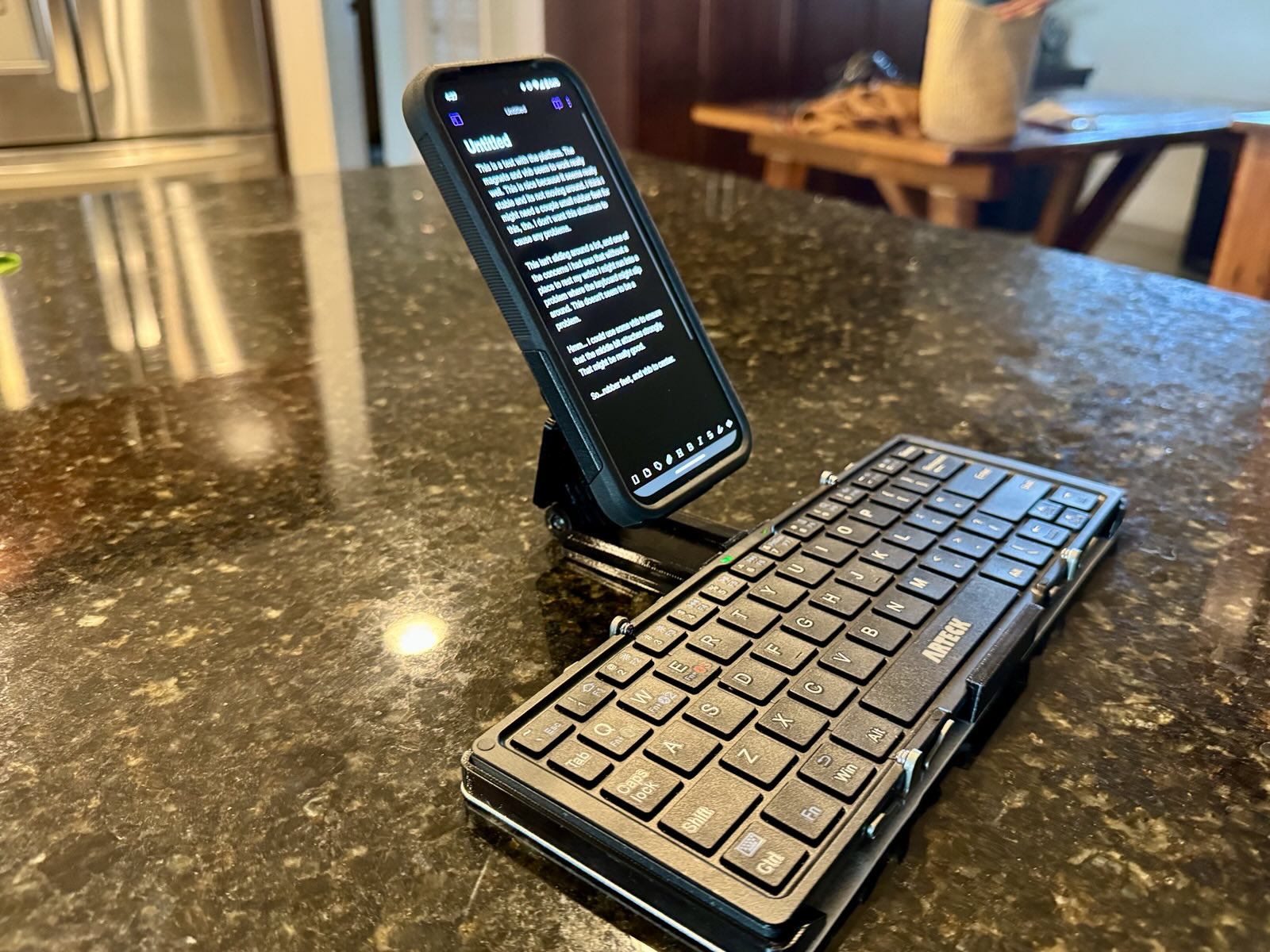I find phone typing exhausting and tedious. As technology evolves, there are always compromises. A physical keyboard takes up space, so we went ahead and got rid of them on phones. This is generally a good compromise, but I assumed that with all the permutations and experimentation we might have found a better option by now. But I’ve given up on on-screen keyboards as a viable option. My brain seems wired to type on keyboards. Its not wired to swipe, or tap, or use speech recognition.
So I’ve been using a foldable keyboard more.
I just read this post about coding without a laptop which was a fascinating piece about using AR and a phone-based setup to work.
One of the author’s points was:
Sigh. Can someone please make a good folding keyboard? This little $18 piece of plastic is decent for what it is, but this was the weakest part of the whole setup, and it feels like it should be the easiest. It feels cheap, is bulkier than it needs to be, doesn’t lock when it’s open (which means you can’t really sit with it in your lap), and there’s no firmware based key remapping.
💯% Agree.
This has been my experience as well. There is not a great foldable compact keyboard option for doing actual work or typing. After looking at various options, I settled on the Arteck HB066. And its ‘good’. This post isn’t about making a better foldable keyboard. Its about how I worked around the limitations by 3d printing some bits.
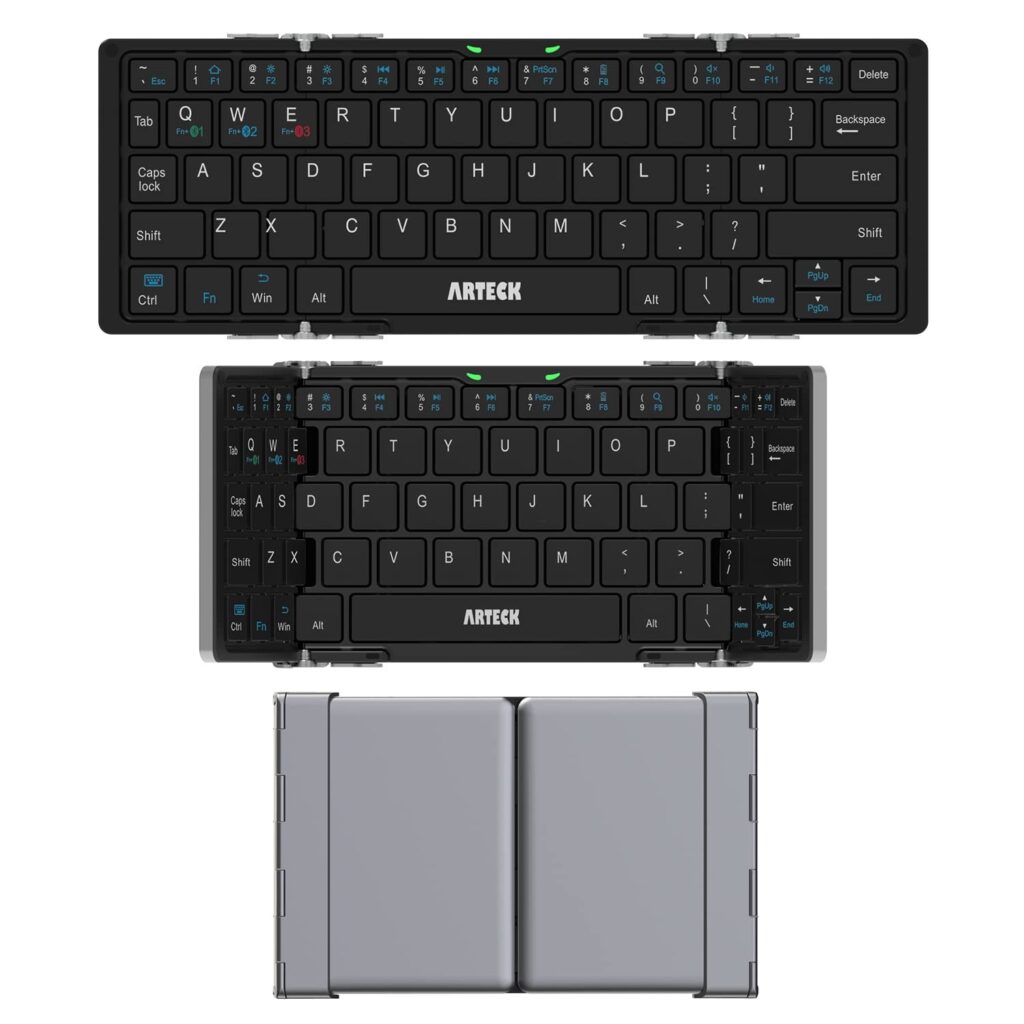
I bought one used off eBay for $20 and was impressed. Overall, its a good keyboard, with a serviceable layout, and a macbook-y feel.
My Use Case
My main use of this is actually Spanish translation as part of immersion learning. I watch some television in Spanish (I’m currently watching Andor, and Diego Luna does the Spanish dub and its great!) and use Google Translate very frequently.
I also use it quite often for blogging, writing, messaging, pretty much anything I would type. Ever been in that spot where you want to respond to someone but touch typing would be way too much hassle? This is a great cure for that.
I also have one more use case: as my TV’s remote. I use Android TVs, which is just Android, and you can de-google it with things like FLauncher and Smarttube. It also allows you to connect any bluetooth keyboard to your tv and use it as a remote. So fn-1 is my phone, fn-2 is my tv, and I switch between the two frequently to do things like, say, control Jellyfin, pause, or change the volume. Bonus!
The Problem
There are a number of issues which effect the ability to consistently type:
- When unfolded, the hinges do not ‘lock’ into a flat surface that can be typed on.
- When unfolded, the sides kind of ‘droop’.
- The keyboard slides around.
- There is no attachment for the phone.
My Solution
After a bit of field testing and prototyping, I decided on the following design:
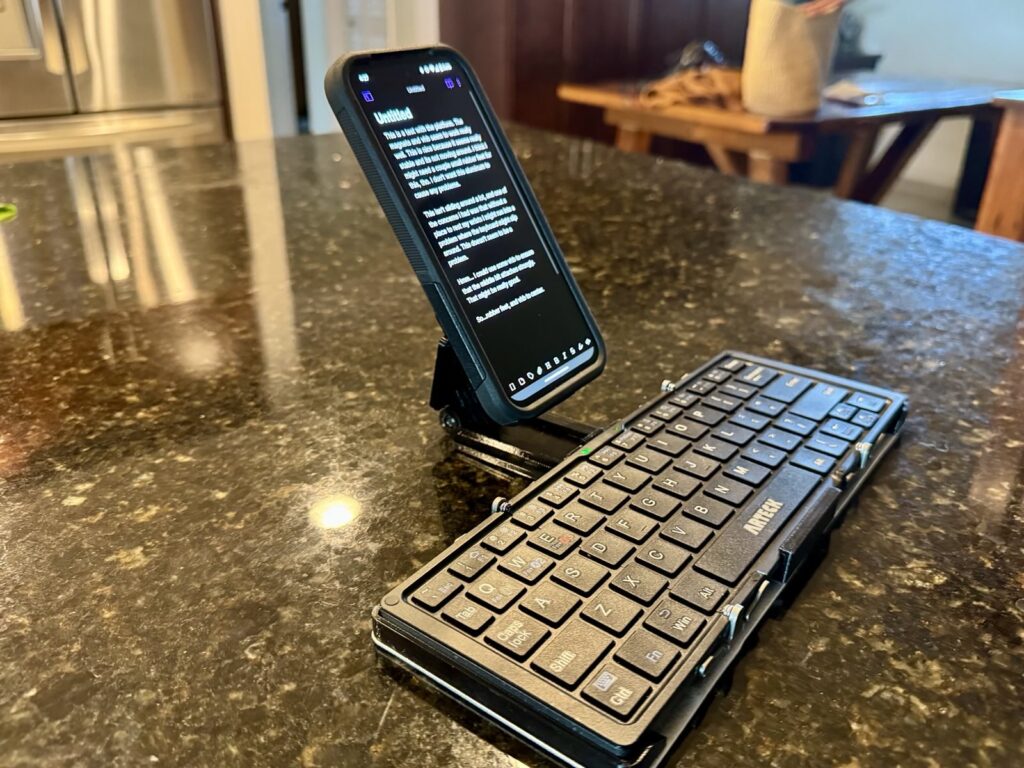
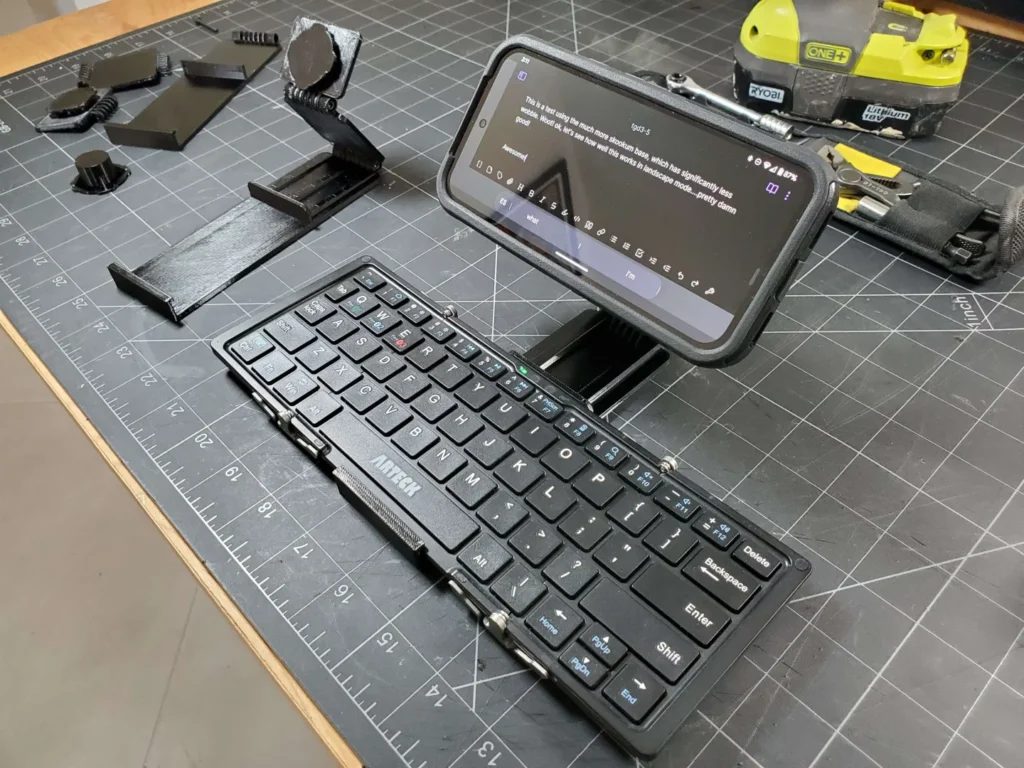
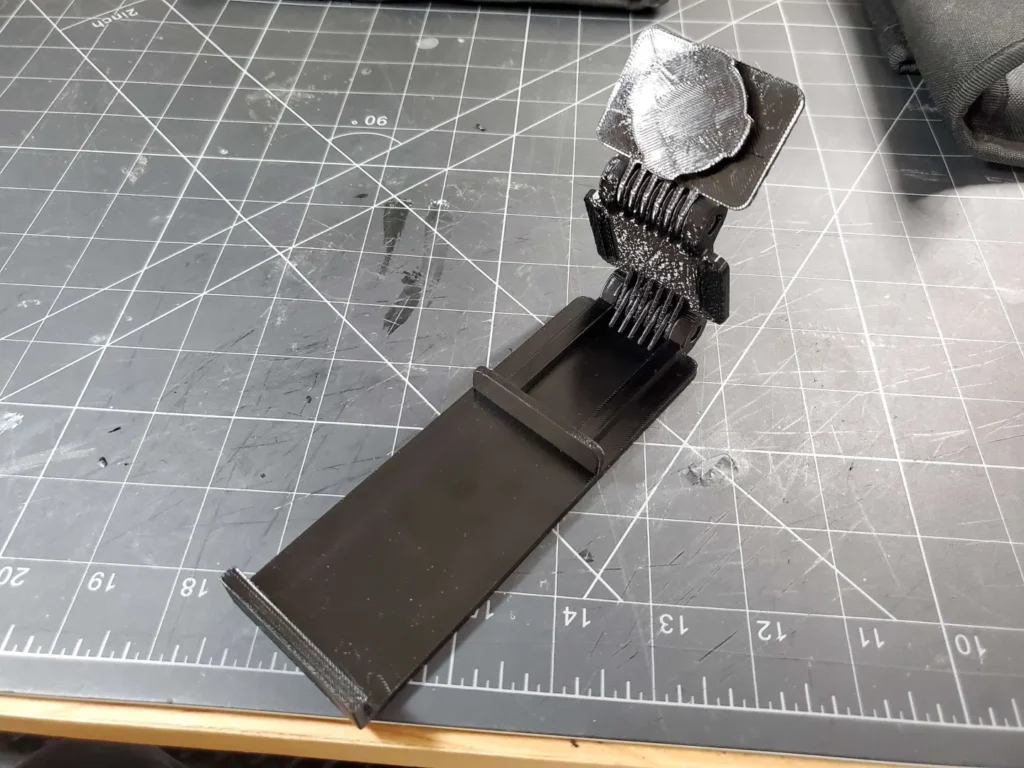
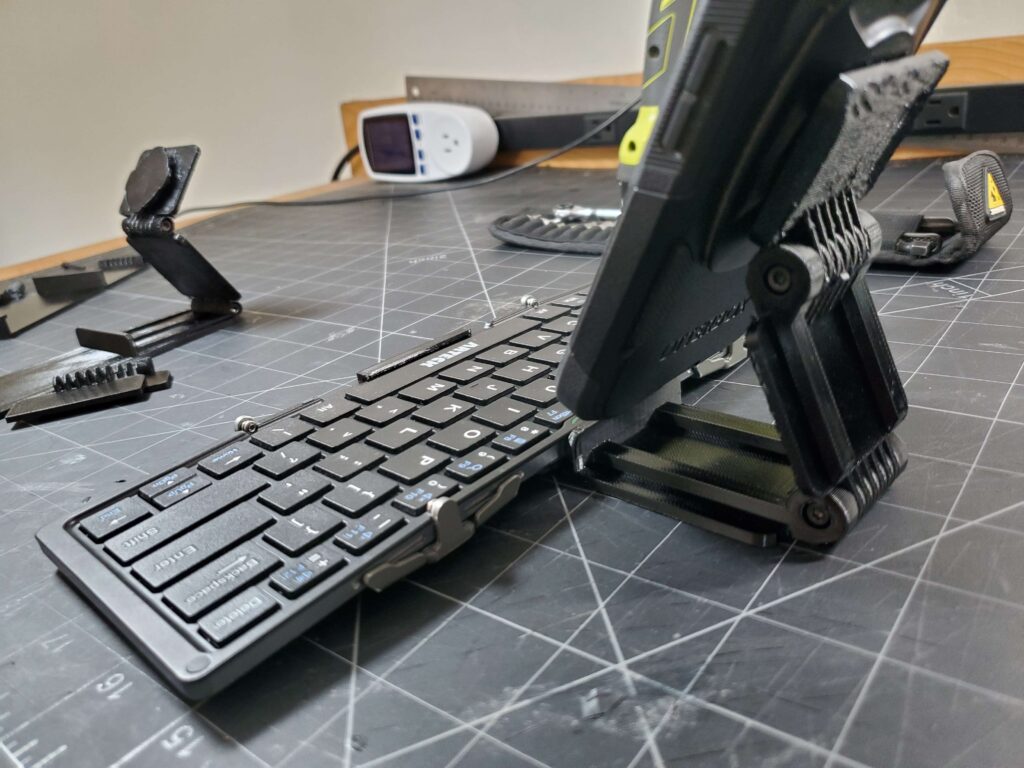
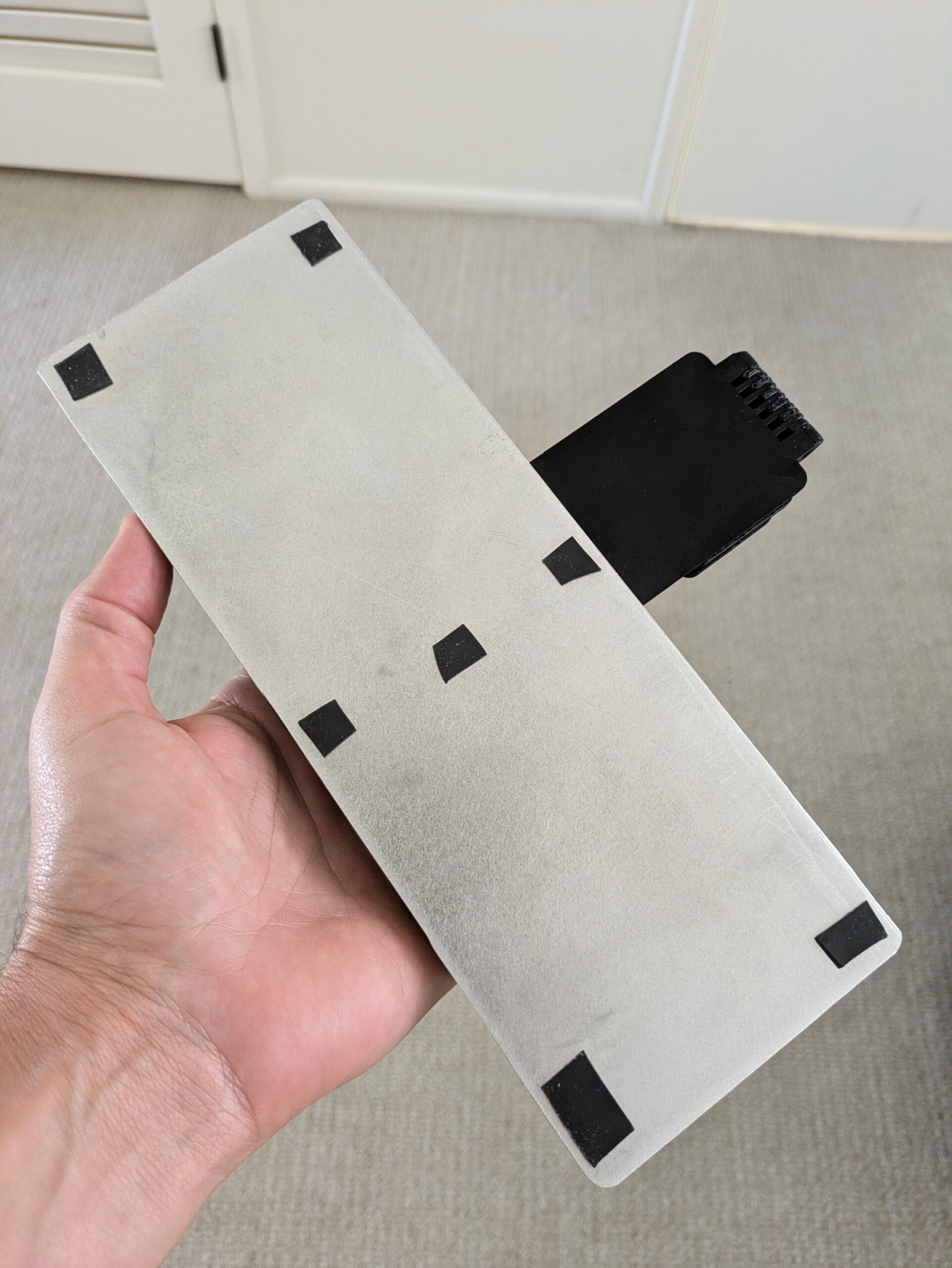
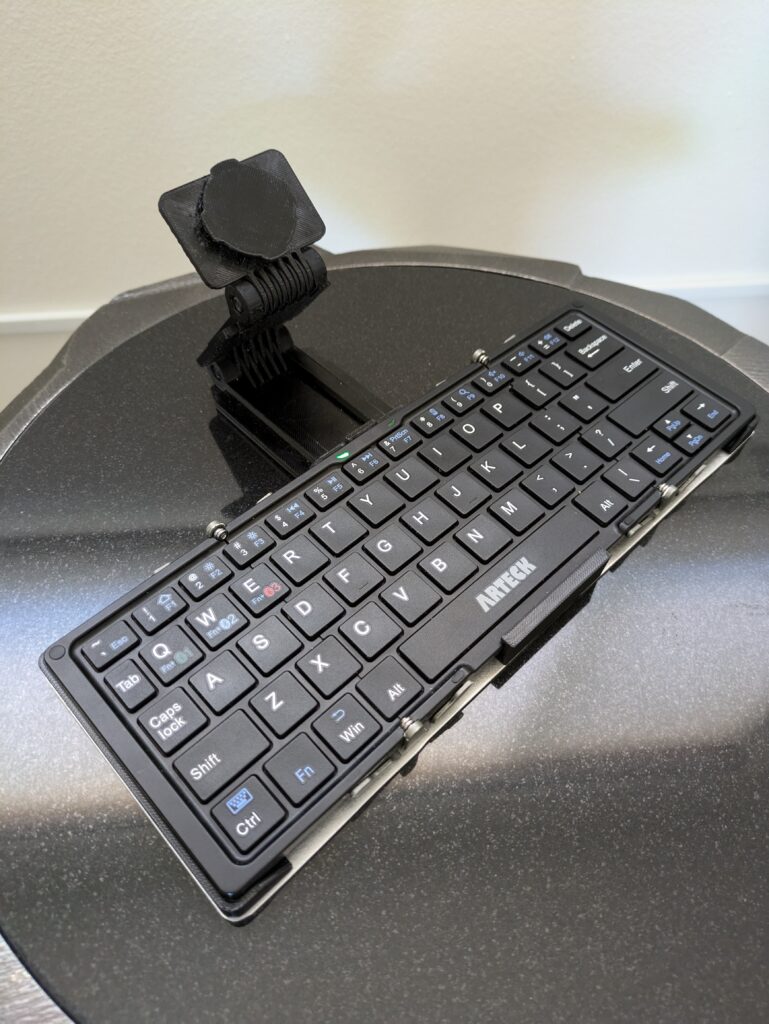

I’ve been using the design for 2 months and its great! It works really well and has allowed me to be more effective with my phone and reduce the need for a larger computer.
Cantilevered Hinges
The cantilevered design for the phone is a common design…but why this hinge design? It allows for easy positioning of the phone. It also provides for a better distribution of the weight of the phone above the hinges, meaning the hinges do not need to be as strong.
But the hinges do need to be strong! And they are big on purpose. They need to be big to handle the wobble that occurs from typing. Much of the iteration centered around increasing the strength to ensure the phone stayed steady. Early versions of the design would probably induce motion sickness 🤢.
As part of my lapdock development, I spent a lot of time (like days) designing and printing multiple friction hinge designs. I used this experience and picked an ‘interleaved’ design to provide a lot of surface area to make the hinge strong but easy to adjust.
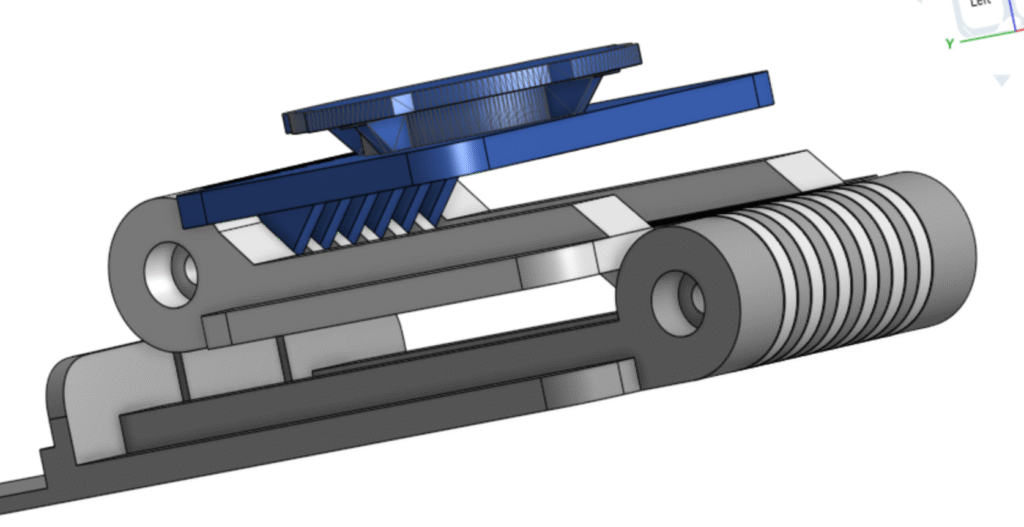
Friction-based hinges are hard to 3D print, and they do need to be chunky in order to be effective.
Quad Lock
I already have a quad lock adapter on the back of my phone, and so creating a basic quad lock compatible item was an obvious answer. While you can purchase various mounts, its very straightforward to make a 3d printable shape that attaches quite well.
The Base
The above screenshots give an idea of the parts, but here is a photo of me applying pressure to allow the VHB tape to wet out. It shows the aluminum base that stabilizes the keyboard:

The base provides the much needed stability when typing on a lap, and also ensures that when unfolded, the keyboard lies flat. It also ensures that it lies flat consistently which is critical to effective typing.
While I iterated on a number of folding base designs, simplicity won out. Creating a strong foldable setup would have been bulky and complicated. The aluminum sheet is very strong and light, and really doesn’t take up a lot of space in my bag.
The base and magnets that snap the keyboard in place that, once I used it, it was clearly the best solution I’d come across yet.
In Summary
Overall, I’m happy with this design, and it allows me to translate Andor without having a big distracting laptop on my lap. I do wish there was a better foldable keyboard out there, but I think my use case is so specific. A cantilevered quadlock phone holder and lap-friendly keyboard holder would be a failed kickstarter….at best. 😀
It is possible a keyboard that *doesn’t* fold might be a better option, and I could design something around that. But at this point in time, I made what I made, and I don’t feel the need to iterate further.
Thingiverse
If you’d like to print this for yourself, the files and instructions are up on Thingiverse.
Thanks for reading!
